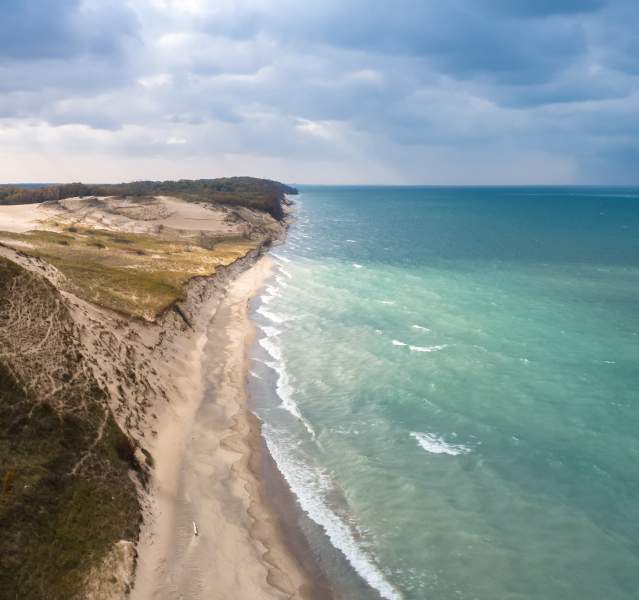Dung Beetles and Bison!
By Alyssa Nyberg
We often talk about the types of plants that our Kankakee Sands bison are eating, and how that will affect the prairies. What we rarely talk about is what is happening at the other end of the bison.
Bison poop, bison patties, dung, feces, meadow muffins…there are a whole host of flowery alternatives (my kids and I came up with 23 different terms!) to describe the very important resource that our bison are contributing to the prairie.
A bison eats about 24 pounds of grasses, sedges, woody plants, and a sprinkling of flowers each day! Having teeth only on their lower jaw (like cattle, deer, and goats), to eat, they wrap their long tongue around the vegetation, pinch it off between their tongue and lower teeth, and sloop!, down the hatch it goes.
Like other ruminants, bison cannot digest plant material directly. They have a four-chambered stomach that takes the plant material in, processes it mechanically, and exposes it to bacteria that can break down the cellulose. Then the material is burped back up (regurgitated) and the bison are officially “chewing their cud.” After another swallow, the chewed cud is passed back into the last two stomachs for further processing, then onto the intestines for nutrient absorption and finally out the back as poo.
But once the dung hits the prairie, it’s not over. Far from it. There are many interactions between the patty and the planet, and one very interesting one is the use of the poo by beetles, affectionately known as dung beetles or scarab beetles.
Worldwide there are approximately 35,000 different species of dung beetles! In North America, we have 1,500 species of beetles whose lives depend upon dung. These fascinating beetles range in size from a small 1/8 inch to over 1.5 inches and vary in color from dull black to metallic green. Some dung beetles even have horns!
Different species of dung beetles use meadow muffins in different ways. Tunnelers make tunnels below the bison patty, and lay their eggs on small bits on dung that they have pulled into those tunnels. Dwellers live in the bison patty (take a moment to imagine that!), creating brood chambers within the patty itself. And then there are the charismatic carrion beetles that roll balls of dung away from the patty, bury the balls underground and lay their eggs on the dung balls.
Dung beetles aid in the breakdown of the bison patty. They move the patty, bit by bit, from the surface of the ground to below ground, thus assisting in the process of organic matter released into the soil, which helps with water holding capacity of the soil and nutrient availability to nearby plants. This also helps to keep fly populations in check by moving the wet paddies below ground where the flies cannot access them.
 This scooped scarab (Onthophagus hecate) was found during our May 2020 dung beetle survey at Kankakee Sands. Though he looks intimidating, fear not – he’s only 1/3 of an inch in size.
This scooped scarab (Onthophagus hecate) was found during our May 2020 dung beetle survey at Kankakee Sands. Though he looks intimidating, fear not – he’s only 1/3 of an inch in size.
Over the past three years, we have been studying the dung beetle community at Kankakee Sands, trying to get a clearer picture of whom it is we need to be thanking for all the hard work of bison dung and cow dung recycling.
Insects are small, but their contributions are not insignificant. There is so much that we do not see or think about that goes on right under our noses and toes, dung beetles being a great example.
When the stay at home restrictions are lifted and you want to take a hike to see some dung beetles, try the Wet Prairie Trail in the north bison pasture at Kankakee Sands. The bison left behind a lot of bison dung before they were moved to the south pasture. There are “loads” to explore!
Stay safe!
_____________________________________________________________________________________
The Nature Conservancy’s Kankakee Sands is an 8,300-acre prairie and savanna habitat in Northwest Indiana, open every day of the year for public enjoyment. For more information about Kankakee Sands, visit www.nature.org/KankakeeSands or call the office at 219-285-2184.

